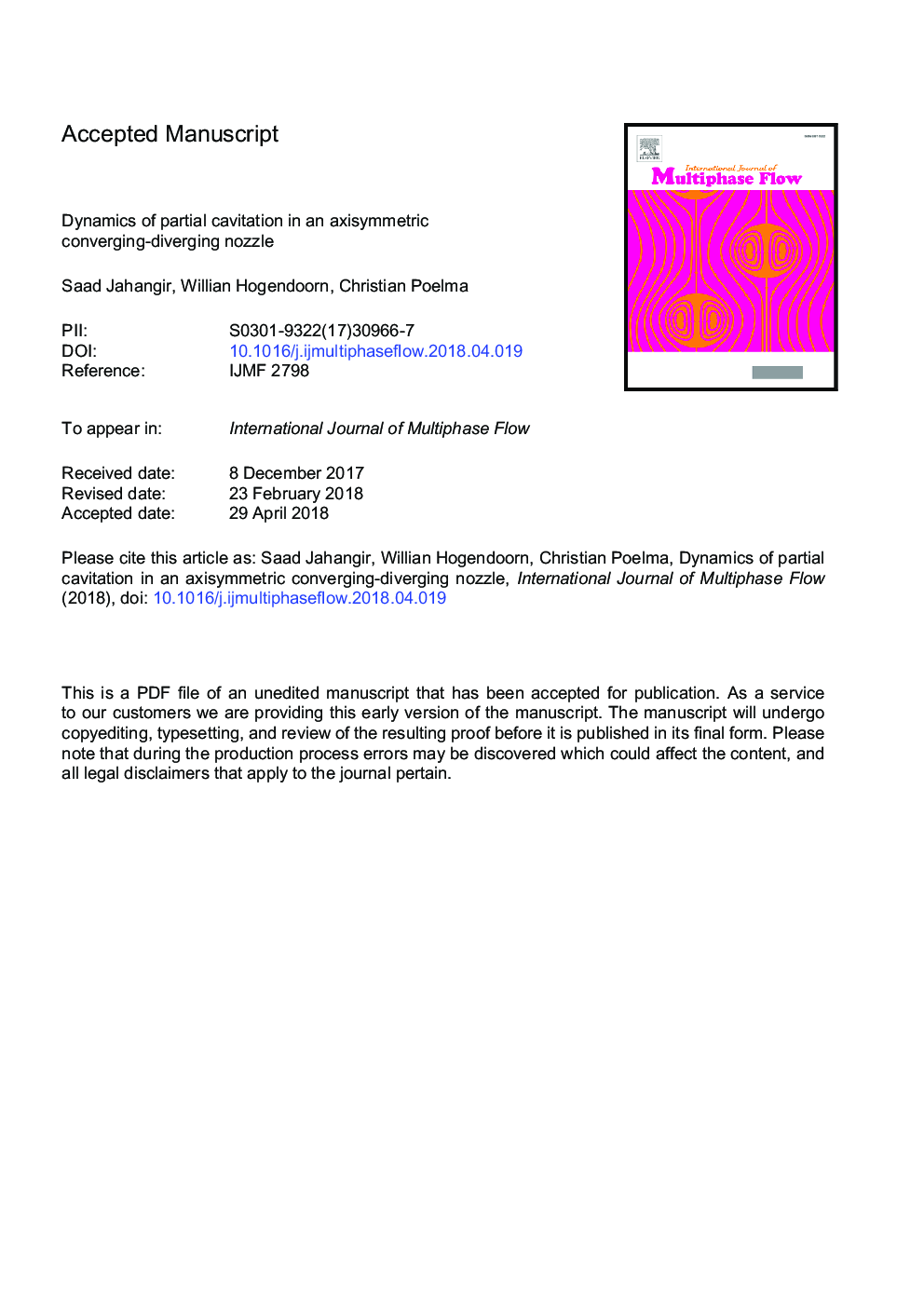| Article ID | Journal | Published Year | Pages | File Type |
|---|---|---|---|---|
| 7060042 | International Journal of Multiphase Flow | 2018 | 29 Pages |
Abstract
Partial cavitation dynamics in an axisymmetric converging-diverging nozzle are investigated experimentally. Shadowgraphy is used to visualize and analyze different cavitation regimes. These regimes are generated by changing the global static pressure and flow velocity independently. Cloud cavitation is the most interesting and complex regime, because the shedding of vapor clouds is caused by two different mechanisms: the re-entrant jet mechanism and the bubbly shock mechanism. The dynamics are investigated using a position-time diagram. Using such a diagram we show that for cavitation number Ïâ¯>â¯0.95 the cavity shedding is caused by the re-entrant jet mechanism, and for Ïâ¯<⯠0.75 the mechanism responsible for periodic cavity shedding is the bubbly shock mechanism. Both mechanisms are observed in the transition region, 0.75â¯<â¯Ïâ¯<â¯0.95. The shedding frequencies, expressed as Strouhal numbers, collapse on a single curve when plotted against the cavitation number, except for the transition region. The re-entrant jet mechanism is a pressure gradient driven phenomenon, which is caused by a temporary stagnation point at the cavity front. This leads to stick-slip behavior of the cavity. In the bubbly shock regime, a shock wave is induced by a collapse of the previously shedded vapor bubbles downstream of the venturi, which triggers the initiation of the detachment of the growing cavity. The propagation velocity of the shock wave is quantified both in the liquid and the mixture phase by means of the position-time diagram.
Keywords
Related Topics
Physical Sciences and Engineering
Chemical Engineering
Fluid Flow and Transfer Processes
Authors
Saad Jahangir, Willian Hogendoorn, Christian Poelma,
